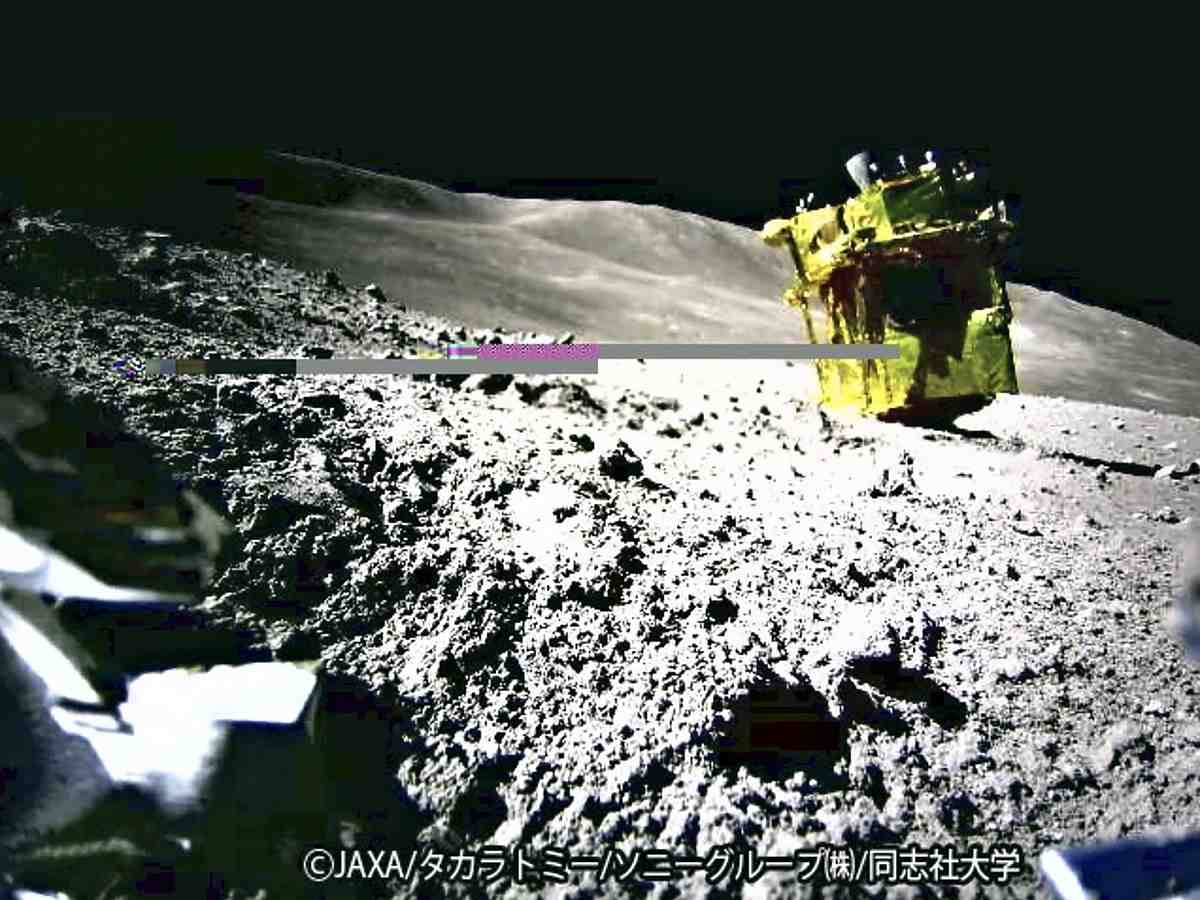
An image captured by SORA-Q shows SLIM on the moon.
14:16 JST, August 27, 2024
Tokyo, Aug. 26 (Jiji Press) — The Japan Aerospace Exploration Agency, or JAXA, said Monday that it ended operations of its Small Lander for Investigating Moon, or SLIM, on Friday after determining that the probe was no longer functioning as it had not responded since late May.
SLIM landed near the Shioli crater in Mare Nectaris, or the Sea of Nectar, on the moon in the early hours of Jan. 20, becoming the first Japanese probe to successfully touch down on the moon.
The probe achieved its primary goal of a so-called pinpoint landing, or touching down on a spot within 100 meters of its target. However, one of its engines was damaged just before touchdown, causing it to land at an unexpected angle and rendering it unable to generate power with its solar cells. It was taken offline about two and a half hours later.
Still, the probe resumed operations on Jan. 28 after the direction of the sun changed. It took a picture of itself using two small rovers and transmitted the image to Earth. It also photographed rocks on the moon with a spectroscopic camera and found the presence of the mineral olivine, possibly a clue to the moon’s origin.
SLIM operations were then halted on Jan. 31 as night fell at the landing spot. Despite not being designed to withstand the moon’s nighttime temperatures of minus 170 degrees Celsius, the probe came back online in late February when sunlight returned to the landing site. More images were captured and transmitted successfully.
The probe survived night conditions to resume operations in late March and late April as well, but stopped responding to communications from Earth in late May.
"Science & Nature" POPULAR ARTICLE
-

‘Fiercest, Most Damaging Invasive Weed’ Spreading in Rivers, Lakes in Japan, Alligator Weed Found in Numerous Locations
-

Univ. in Japan, Tokyo-Based Startup to Develop Satellite for Disaster Prevention Measures, Bears
-

Tsunami Can Travel Vast Distances Before Striking, Warn Japanese Researchers
-

Japan’s H3 Rocket Failed in Latest Launch, Says Official
-

Japan’s H3 Rocket Likely Made 1.5 Trips Around Earth; Analyst Believes Satellite Almost Certainly Lost As Well
JN ACCESS RANKING
-

Japan Govt Adopts Measures to Curb Mega Solar Power Plant Projects Amid Environmental Concerns
-

Core Inflation in Tokyo Slows in December but Stays above BOJ Target
-

Major Japan Firms’ Average Winter Bonus Tops ¥1 Mil.
-

Tokyo Zoo Wolf Believed to Have Used Vegetation Growing on Wall to Climb, Escape; Animal Living Happily after Recapture
-

JAL, ANA Cancel Flights During 3-day Holiday Weekend due to Blizzard

























